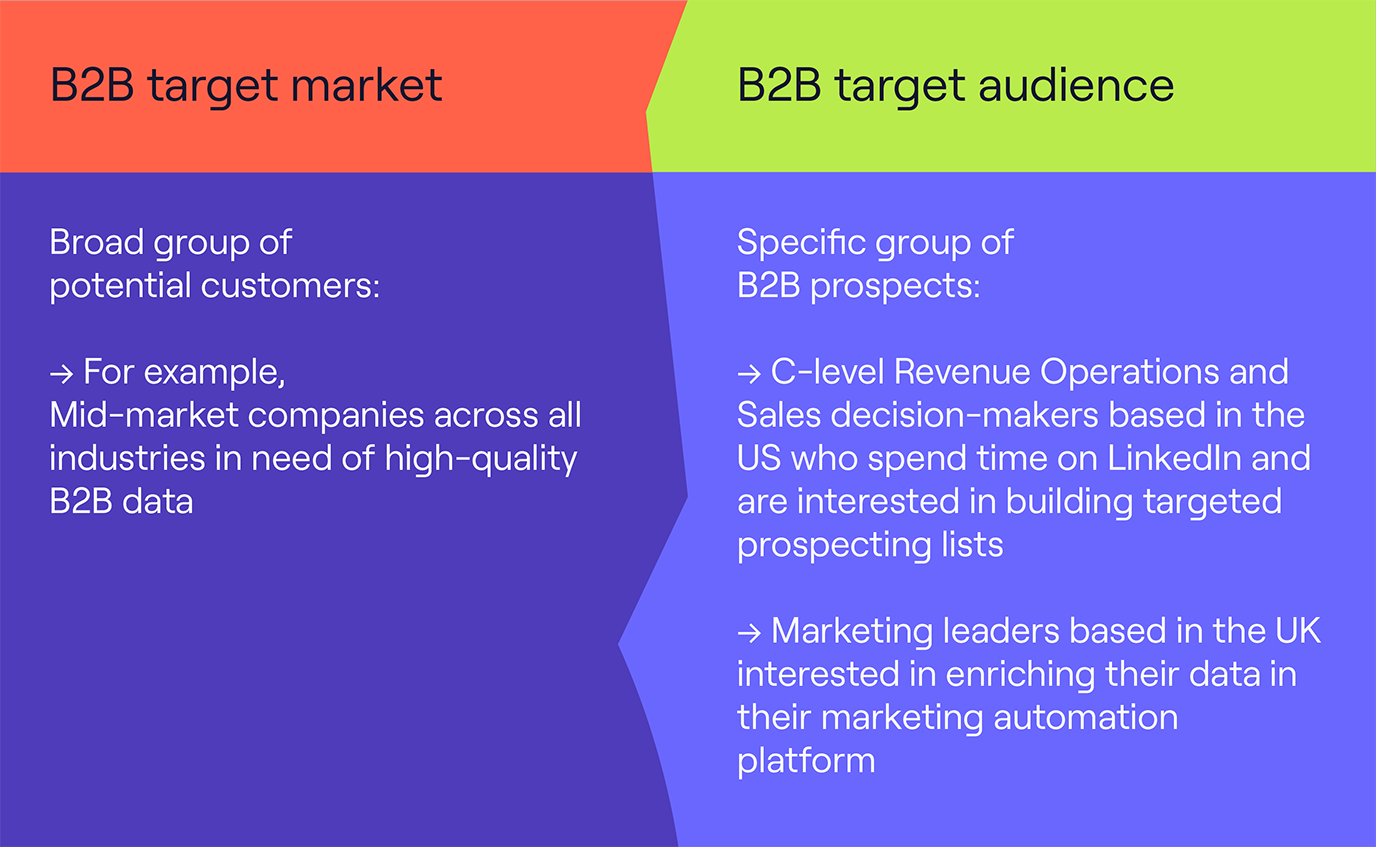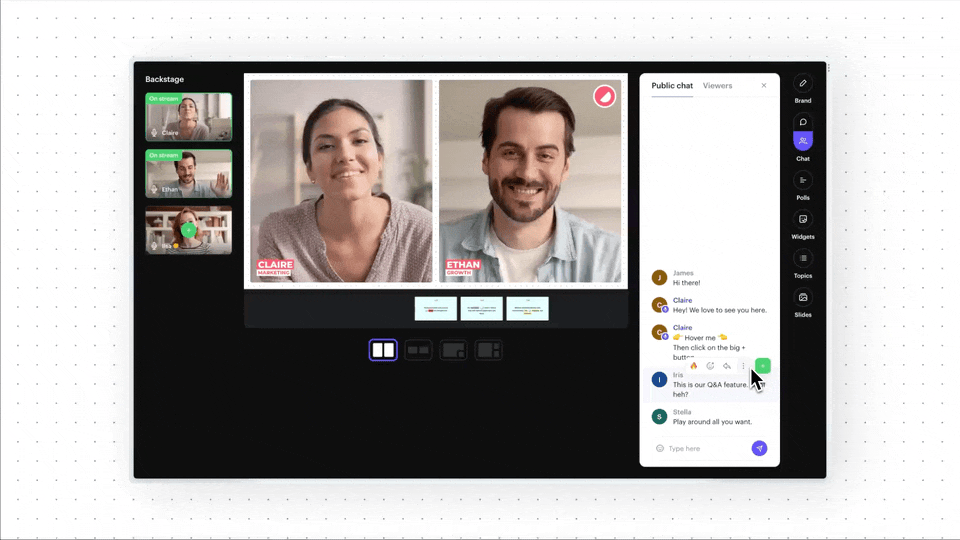Introduction
Ever attended a concert – at home?
Think of that joyous head-bobbing to your favorite band, right from your living room. Now, imagine transforming that energy into engaging virtual events. Yes, you read right. Virtual events can be as exhilarating as McCartney belting out 'Hey Jude' live.
Three months ago, my laptop screen was the stage connecting over a thousand individuals. We broke down geographical barriers, fostered communities, and curated experiences people will remember long after the last sign-off.
Want to know how? All aboard this backstage pass to hosting fun, engaging virtual events!
Understanding Virtual Events
Virtual events have become a a must have in a changing economy. A shift from the traditional face-to-face meetings, these events are the beacon leading to progressive networking and sharing key takeaways.
Crux of Virtual Events
Virtual events serve as a platform where individuals gather in a digital space rather than physical ones. They buoy up connections, collaborations, and knowledge sharing, but within a virtual sphere. Catering myriad needs-from trade shows, job fairs, to internal team meetings-virtual events have carved a niche in the world of digitalization. The evolution of technology has been instrumental in enabling attendees to be part of these events from the comfort of their own dens.
The Driving Force Behind
The pivotal force behind this digital adoption is the pandemic outbreak. The unanticipated lockdowns worldwide necessitated the shift from in-person to virtual events, making it the "new normal". But the footprints made by virtual events have changed the outlook towards traditional methods. The advantages they envelop are making them a durable inclusion in the post-pandemic era as well.
Benefits of Virtual Events
Without having to deal with the exigencies of a physical event, participants experience a plethora of benefits through the virtual mode. Virtual events open up a world full of opportunities - transcending geographical barriers; one can interact with people globally. It's not only cost-effective but also an eco-friendly option, making it a popular choice among organizations and attendees.
Many platforms offer free versions so you can start running virtual events for $0.
Stretching the Boundaries
What sets virtual events apart is their ability to reach out to a larger crowd. The restriction of physical space is eradicated, allowing more attendees to be part of the event. These events also hold the capacity for higher audience engagement, leveraging interactive tools like polls, quizzes, chat rooms, etc.
Maximizing Engagement in Virtual Events
The distinct challenge that comes along with the digitization of events is maintaining participant engagement. With the distractions only a click away, it's essential to strategize ways that keep the audience hooked. Blending creativity with technology is one way to achieve it. By introducing gamification, interactive panel discussions, virtual tours, forums for Q&A and live chats, you can ensure participants stay engaged and involved.
Building Engagement Blocks
The fundamental block to build engagement is making the interaction two-way. It's about creating a participatory atmosphere rather than a lecture. The key is to leverage the power of interactivity to keep the audience engaged and foster a sense of community. Thus, understanding virtual events gives a glimpse into the potentialities it offers, making it a necessary adoption in our life blueprint. The following section will delve into the planning of such events to make them successful.
Planning Your Virtual Event
- Learn how to recognize your target audience
- Understand the importance of setting detailed and clear event goals
- Discover how to find the best platform for the event
Identifying Your Audience
It's crucial to know exactly who you are trying to engage. For any event to succeed, the content has to hit the right crowd. If a stand-up comedian performed for an audience who came for a classical music concert, things might not go well. Understanding your audience is knowing what they want and need. Take time to conduct audience research. Understand their demographic, their interests, and their expectations. This information will guide every decision when planning and marketing your event.

Setting Your Goals
Once you know your audience, the next big question is - what do you want the event to achieve? It's surprising how many event planners skip this step. Goals guide actions. Without them, you are navigating without a map. Goals could range from increasing brand awareness, pushing a new product, or nurturing existing customer relationships. Keep them realistic, measurable, and directly related to your business objectives. Remember, a well-executed event with no clear goal is a ship sailing without a destination. Try to think of your virtual event as part of a funnel driving people to your product or service.
Choosing the Right Platform
Now, you're clear about your audience and your objectives. The next step is finding the best platform to host your virtual event. In the post-Covid era, there are countless virtual event platforms available. Go for the one that meets your specific needs. Can it handle the number of attendees? Is it easy to navigate? Does it offer engagement tools, such as polling or live chats? Does it cater to your audience's tech capabilities? Your choice of platform can be a 'make or break' factor for your event. So, choose wisely.
We might be a little biased here but we believe that Contrast is the best platform for running fun virtual events. Create unique, modern and engaging experiences in just a few clicks.
As you sketch the blueprint of your virtual event, the next step becomes creating engaging content to wow your audience. Keep in mind that while a physical event can get by with mediocre content due to the experience, your online event is purely content. So, it needs to be top-notch.


Run the Most User-Friendly Events
Start for free up to 30 registrants. No credit card needed.
Start for freeCreating Engaging Content for Your Virtual Event
Creating compelling content for your virtual event may seem daunting, but it doesn't have to be. With the proper planning and a few key strategies, you'll be able to capture your audience's attention and make your event a truly memorable experience. This section will help you craft content that sizzles, influences, and leaves your audience wanting more.
Understanding Your Audience's Needs
Understanding your audience is pivotal to crafting content that resonates. Knowing who you are speaking to can influence not only what you convey, but how you present it. Research your potential audience broadly to identify commonalities, priorities, and interests. It's also useful to understand the platforms your audience prefers for virtual gatherings.
Making Use of Visual Aids
Visual content aids comprehension and actually helps retain information for longer. Infographics, diagrams, and interactive media can be utilized to make complex topics more digestible and engaging. Visual aids are an integral part of any virtual event. They can help elucidate complex concepts, grab attention, and make your content more enjoyable. Contrast offers many features to make your event more engaging, like topics, transitions and more.

Creating Interactive Experiences
Engaging with your audience is key. Interactive experiences not only make your event more entertaining but also foster a deeper connection with your participants.
No virtual event can be successful without thorough planning. So, take the time to identify your audience, outline your goals, and select the best platform. Make these steps your priority, and you'll be well on your way to hosting fun, engaging virtual events that captivate and impress.
Engagement spikes when attendees actively participate. Ways to foster interactivity include Q&A sessions, breakout rooms for smaller group discussions, live polls, quizzes, or games. Software considerations play a role here, so choose a platform conducive to interactive features.
Cultivate Authentic Connections
Virtual events should be more than one-way information transfer. Aim to cultivate a genuine sense of community and connection. Encourage attendee interaction, allocate "networking" times where attendees can talk freely, or even create platform-agnostic groups (like on LinkedIn or Facebook) where discussions and connections can continue post-event.
The right person moderating your event can make or break it.
Promoting Your Virtual Event
- Optimise the powers of social media platforms
- Personalise your email campaigns
- Boost visibility through partnerships
Using Social Media
Social media platforms offer a treasure trove of marketing possibilities. These platforms, whether it be Instagram, LinkedIn, or TikTok, have vast and varied audiences. A well-crafted, tailored social media content strategy can catapult your event status from obscure to must-attend.
Content selection is king. From sneak peeks, countdowns, to posts from speakers or influencers, social media content can build excitement and anticipation. Remember to include links to your event's registration page in your post or bio.
Social media ads offer another avenue to boost your event. Aimed at your specific target demographic, social media ads provide vital exposure, further ensuring that your event attracted the desired participant size - in this case, over a thousand! DON'T forget to leverage the prowess of hashtag campaigns to amplify reach.
Email Marketing
Email marketing stands out as another robust tool for promoting your virtual event. By building the right invitation emails, you can drive engagement and secure registrations. An attention-grabbing subject line will pique interest, while a well-structured and enticing body copy can convey the value and importance of your event.
Designing strategic drip campaigns can keep your event on the top of your audience's mind. A simple "Save the Date" email, followed by speaker announcements, then a "Few Seats Left" nudge can keep the hype going.
Don't forget to use analytics data and A/B test your email campaigns to fine-tune them for the best results!
Partnerships and Collaborations
Having partners can significantly widen the reach of your virtual event. Collaborating with influencers, keynote speakers, sponsors, or even fellow companies can result in reciprocal promotion. They can promote your event to their following, leading to an increase in awareness and prospective participants.
Such partnerships also lend credibility to your event. Attendees are more likely to sign up when they see trusted names associated with your event.
To nurture these collaborations, ensure open and frequent communication, jointly formulating promotional plans that mutually benefit both parties. Remember, the success of your event might also depend on the performance of your partners in promoting the event.
This strategy of social media usage, personalised emails, and strategic partnerships will ensure not only a well-promoted event but also set the stage for a flourishing, successful virtual program.


Run the Most User-Friendly Events
Start for free up to 30 registrants. No credit card needed.
Start for freeHosting Your Virtual Event
Creating captivating virtual events requires a lot of planning. Simplify your process with a focus on crucial stages - prepping, managing in real-time, and wrapping up constructively.
Preparing for the Event
Executing a successful virtual event starts with meticulous planning. Before the big day, there are several key factors to consider to ensure a smooth operation and high engagement.
- Identifying Objectives and Goals
Kick off the planning process by identifying your virtual event's objectives. What do you wish to accomplish? This could include launching a new product, networking, or simply connecting like-minded professionals. Clearly defined goals shape your event's content, structure, and promotional strategies.
Looking for ideas? Here are 11 event ideas that work in 2024.
- Choosing Appropriate Technology
Armed with your event objectives, you'll next need to choose the appropriate technology. Consider the platform's scalability, interactivity capabilities, ease of use, and compatibility with other software (integrations or data export for example).
- Crafting a Detailed Agenda
A well-crafted agenda helps participants know what to expect from the event. It outlines the event's flow, highlighting key activities, speakers, networking sessions, and breaks. A clear timeline respects participants' time and helps maintain their interest.
During the Event
The real action happens during the event. It's when all your planning and preparation comes into play. The following essential elements should be managed effectively during the virtual event.
Facilitating Engagement
An interactive event is crucial to keeping attendees invested in your virtual event. Use features like live chats, polls, and Q&A sessions to foster real-time interaction. Engaging content and dynamic presenters can also capture and retain audience attention.
Technical Support
Address minor technical glitches before they become significant issues. Have a dedicated team in place to troubleshoot and offer support to participants on the platforms used. These quick fixes can reduce participant frustrations and enhance their experience.
Using the right equipment (camera and microphone) will reduce the risk of running into technical issues.
Don't forget to test your cam and mic before going live!
After the Event
The work doesn't end when your virtual event concludes. Post-event wrap-up can provide invaluable insights for future event planning.
Gathering Feedback
Feedback is a powerful tool for continuous improvement. What did your participants like? What fell short? Use post-event surveys or feedback forms to gather participants' opinions. Their insights will shape your future events and ensure they resonate with your target audience.
Evaluating Success Metrics
Analyse key performance metrics (KPIs) of your events. Look at attendee numbers, engagement rates, watch times, feedback scores - all invaluable information to gauge how well you met your event objectives. This data serves as a concrete report of your event’s success and areas of growth.
Virtual events done right are rewarding not only for attendees but also for hosts. By focusing on these phases - pre-event, during the event, and post-event - you build a solid framework for creating fascinating virtual events.
Tips and Tricks for Hosting Successful Virtual Events
TL;DR:
- Catch your audience’s attention by gamifying your virtual event.
- Leverage high-quality content and engaging speakers to retain audience interest.
- Use interactive technology and platforms for seamless involvement.
Gamify Your Virtual Event
One guaranteed way to engage your audience is to inject a sense of play. Games aren’t just for kids – everyone loves a good challenge. Gamify aspects of your event to tap into this basic human instinct.
For instance, you might create a fun quiz – related to your industry, of course. Or a leaderboard to encourage competition among participants. Contests, prizes, and rewards work wonders to sustain interest and participation.
Creating an interactive and competitive environment with activities can do more than just kill time. They're excellent tools to sustain engagement, encourage networking, and make the event memorable.
Prioritize High-Quality Content and Engaging Speakers
It's a universal truth: Content is king. But on a virtual platform, captivating content is more than a monarch - it's the entire empire. Ensuring you have professionally curated, high-value content is important. This can be anything from well-developed presentations to thoughtful panel discussions.
Moreover, the people delivering this content matter too. Charismatic speakers with in-depth knowledge of the topic can make the content shine. Choose speakers who can handle technical difficulties, answer live queries, and have a flair for making the online environment engaging.
Even the most advanced technology can't save your virtual event if your content isn't up to par. Prioritizing informative, engaging, and practical information guarantees better participant engagement and satisfaction.
Harness Interactive Technology
Now to the "how". How do we deliver this playfully packaged, high-value content? The answer lies in technology.
Interactivity is an important facet of virtual events. Interaction promotes engagement and ensures participants are active listeners. Innovative video conferencing platforms can help. Many offer features like breakout rooms for smaller group discussions and tools for live polling and Q&A sessions.
Also, a stable, user-friendly platform is a must. No one wants to fight with technology when they're trying to absorb new knowledge or network with industry peers. Your platform is your virtual venue. Make sure it's a venue your audience enjoys spending time in.


Run the Most User-Friendly Events
Start for free up to 30 registrants. No credit card needed.
Start for freeEmbracing interactive technology doesn't just suit today's increasingly digital world. It ensures your participants have multiple avenues to engage with the content, speakers, and each other.
To conclude, successful virtual events don't happen by chance. They require careful planning, compelling content, strategic use of technology and a sprinkling of fun. With the right approach, your next virtual event can be a showstopper – potentially even outperforming conventional, physical events.
Your Virtual Event: The Grand Finale
Wrapping up, remember that a successful virtual event relies on meticulous planning, engaging content, interactive elements, and effective promotion. With these ingredients, you can draw a crowd, keep them engaged and leave them eagerly anticipating your next event.
Planning and hosting virtual events can feel like a complex task but the payoff is huge. You cement your company's place in your industry, engage your audience, and provide value for your community. And yes, seeing a thousand virtual hands raise in applause is no less rewarding than in a physical setting!
Don't wait until you have a huge audience to start introducing virtual events. Start now. Practice on smaller scale, gather feedback, make improvements and gradually scale up. As the saying goes, practice makes perfect. So, why not start today?
Want the best solution to get started? Sign up for Contrast's free plan to start organizing your next event.
And here's a question for you: Which of these tips feel the most challenging to you and how do you plan to overcome it?
All aboard the virtual event train. It's time to become the virtual host with the most. Remember, your audience, as large as a thousand, is only a click away. And so is the adventure of creating that unique, memorable experience for them. All you need is to take that first step. Ready, set, virtual fun time!
